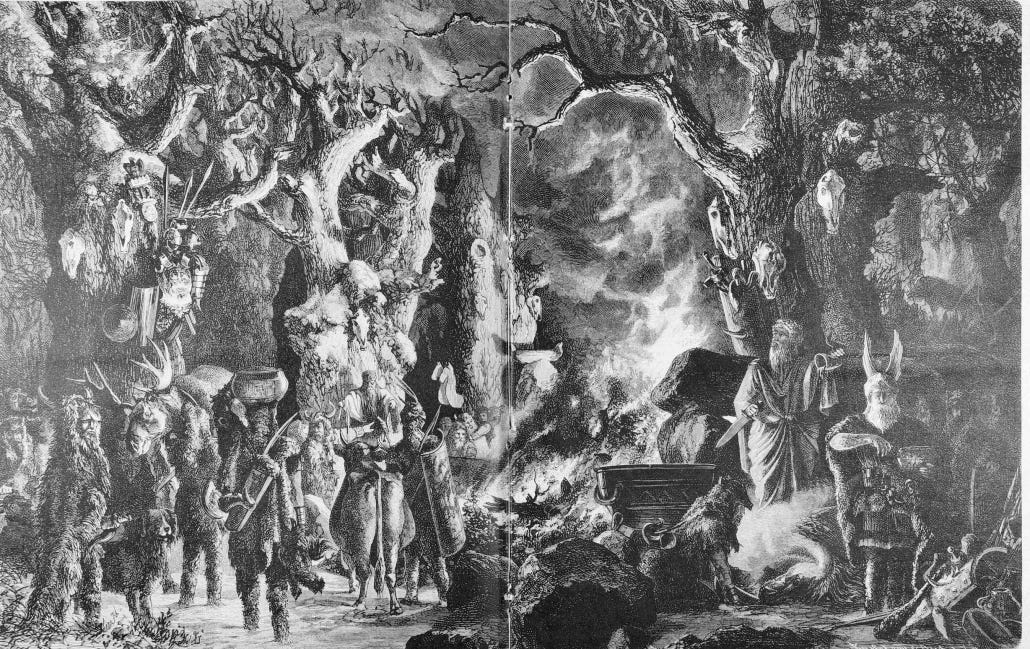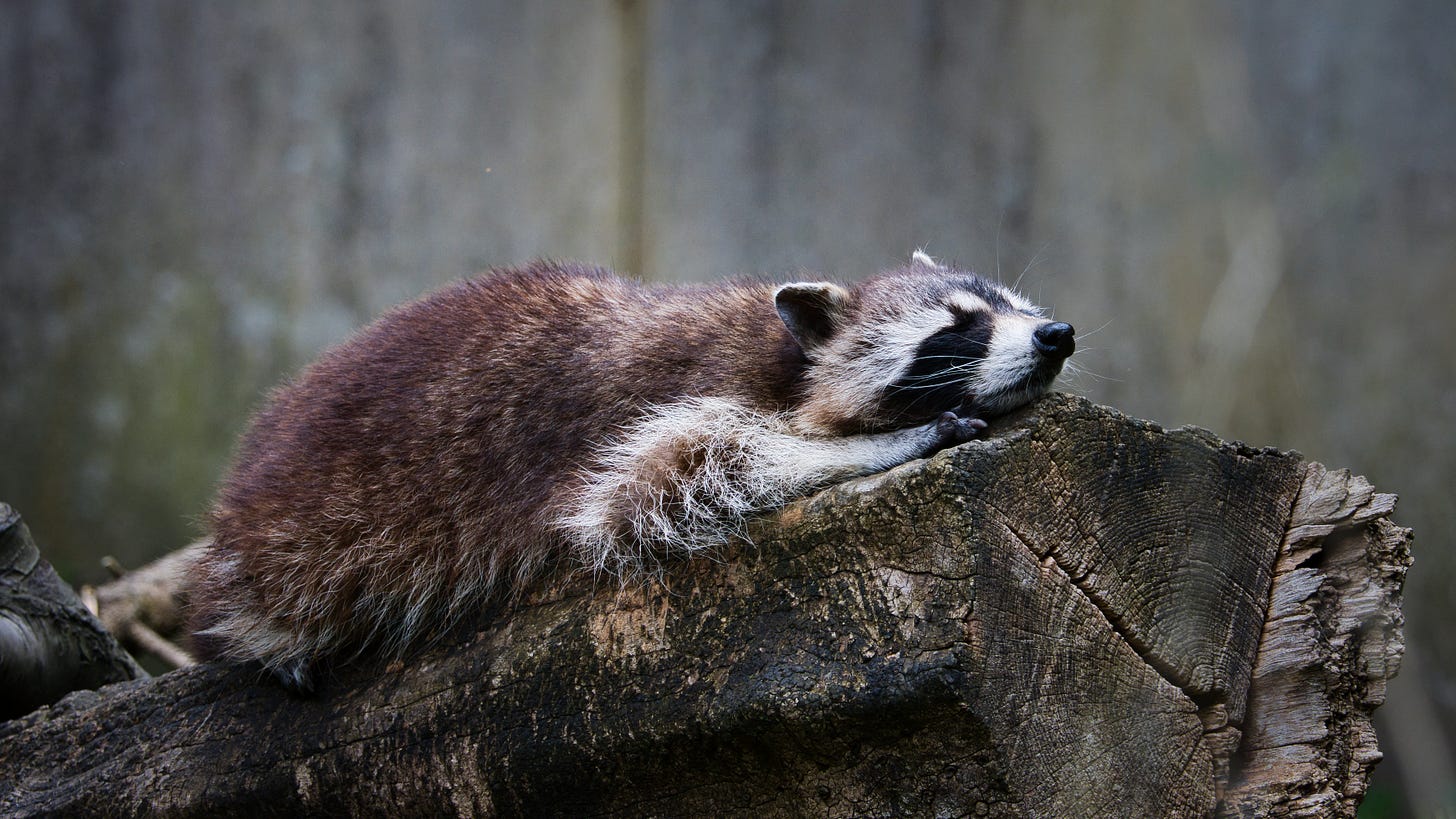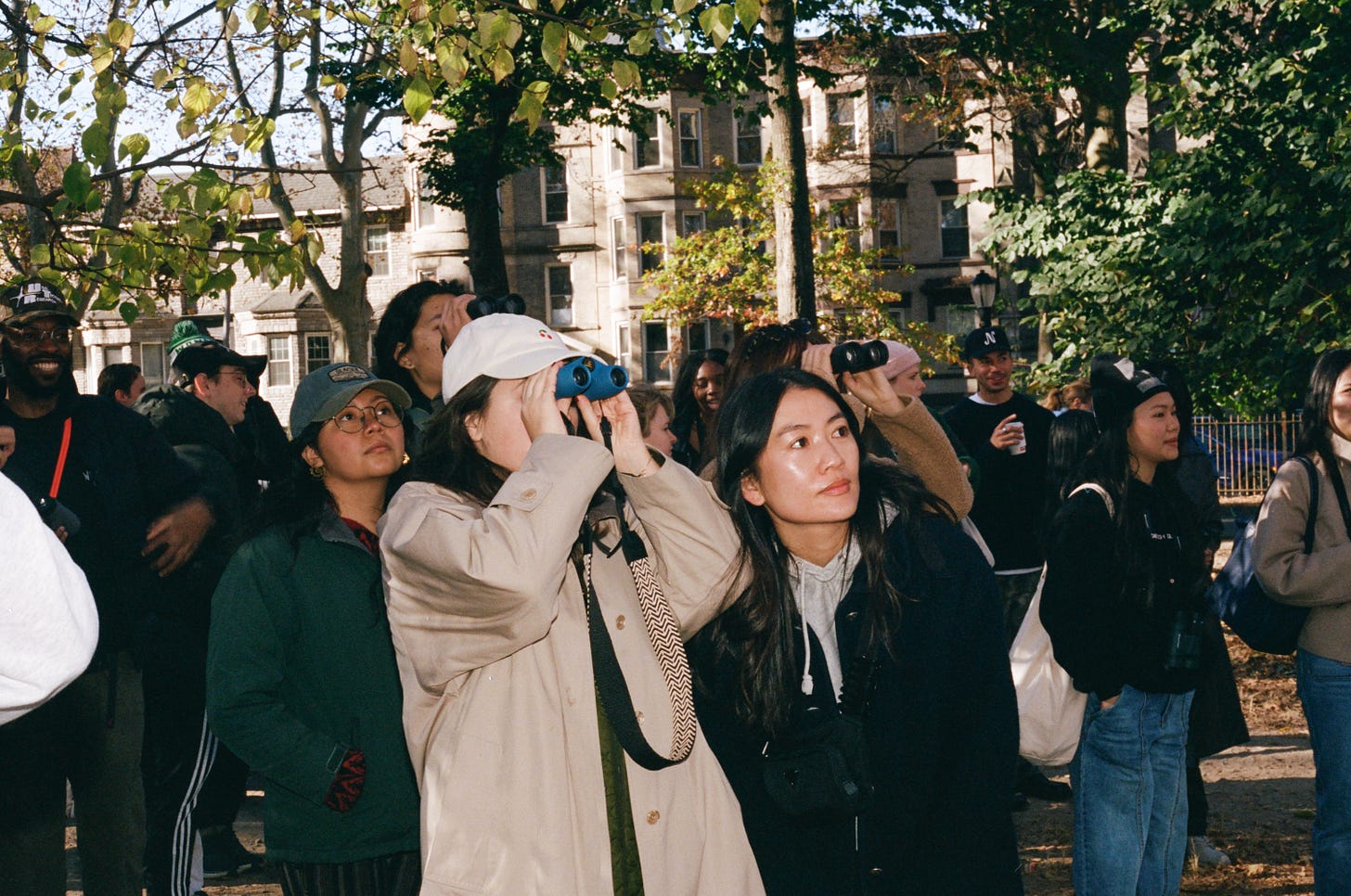Good Tidings, Hotties!
End of year reflection always runs the risk of transmogrifying into new me productivity bro blather. To-do demonry. So, tabula rasa with care!
To get in a different kind of restart headspace, your correspondent recommends revisiting Jenny Odell’s commencement address to Harvard University’s 2020 Graduate School of Design candidates, published as Inhabiting the Negative Space.
"The word innovation is usually tied to the idea of putting something new in the world, rather than restoring something or putting it back in its rightful place. A dam removal takes just as much design, engineering, and innovation as the original installation of the dam, if not more. So I want to ask, what would design look like that aligns not with the logic of profit and production but instead with the logic of repair and responsibility? Can someone working in design be a steward and a gardener instead of a straightforward producer? This doesn’t just require sustained attention. It also requires major shifts in our ideas of art, ego, productivity, and the definition of creativity."
—Jenny OdellWhat would the world—both the real, external world, and our real-ish inner ones—look like if we all committed to small, daily acts of stewardship, maintenance and repair?
—BC Studio
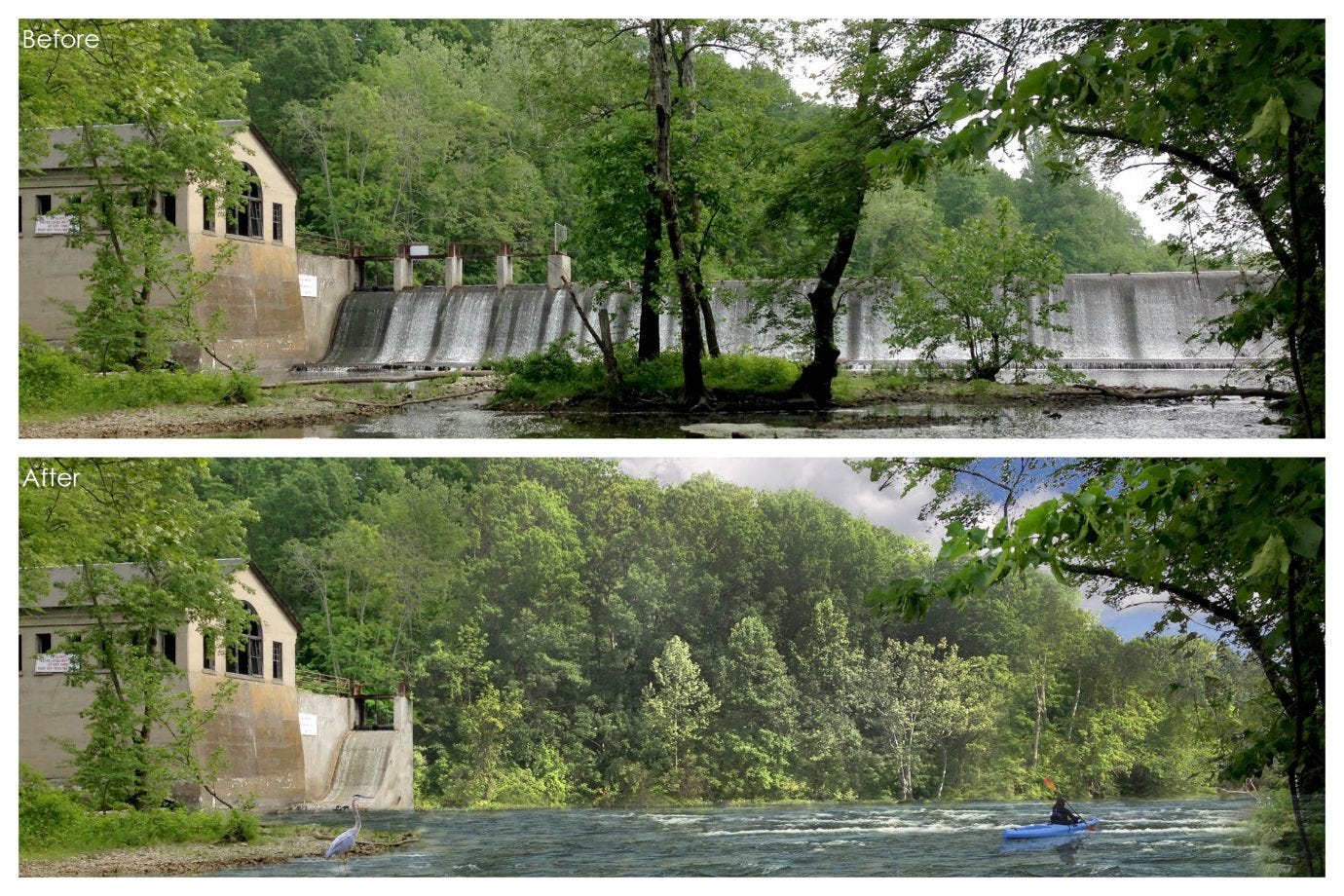
UPDATES & ANNOUNCEMENTS
Who’s ready to hibernate? 🙋 This edition of The Noticer’s Monthly is the last one of 2024! Eternal thank you, subs & members, for your noticing and for supporting this odd bird project 🙇
No more McGolrick Park Saturday walks in 2024. See you in January!
MICRO-SEASON — DEC 9 - DEC 15
Current Japanese micro-season: "Bears start hibernating in their dens" As for McGolrick Park, New York City and perhaps even larger swathes of the eastern US, we notice—
London planetrees go bare · Common Raven visits · New Yorkers start hibernating in their dens
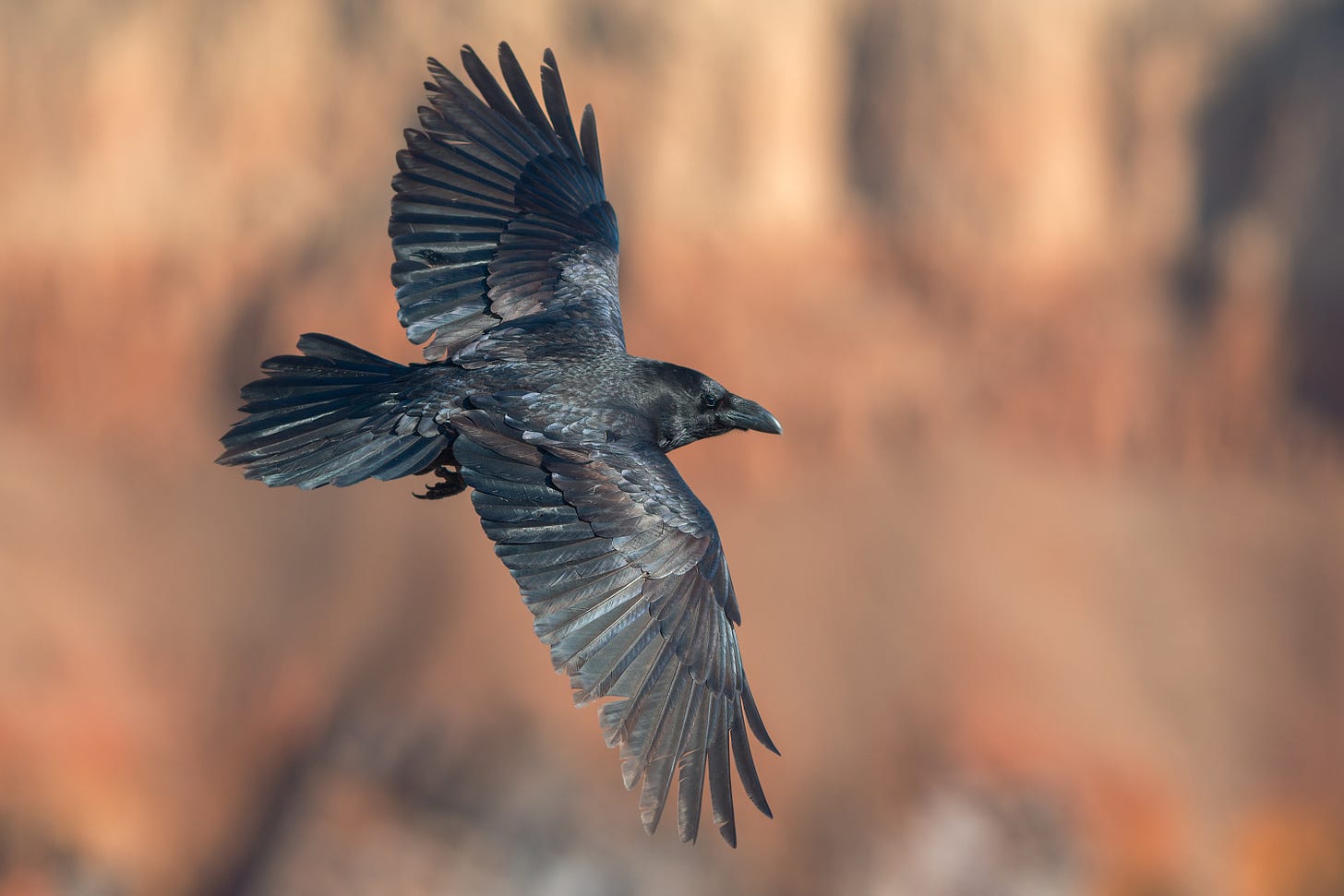
Here’s a simple guide that’ll forever help you distinguish ravens and crows
Wanna learn trees? Live in NYC? If yes and yes: tap this map
Read about London planetrees and their unwitting role in biodiversity collapse here
BIRDS NOTICED IN MCGOLRICK PARK THIS MICRO-SEASON
Common Raven · Dark-eyed Junco · White-throated Sparrow · Fox Sparrow · Swamp Sparrow · Canada Goose · Tufted Titmouse · White-breasted Nuthatch · Red-tailed Hawk · Cooper’s Hawk · American Kestrel · Downy Woodpecker · Red-bellied Woodpecker · Northern Flicker · Yellow-bellied Sapsucker · Hermit Thrush · Northern Cardinal · Blue Jay · American Crow · Rock Pigeon · European Starling · American Robin · House Sparrow · Mourning Dove
2024 IN REVIEW
Alright, number freaks! Here are some 2024 stats:
48: number of McGolrick Park saturday walks
79: average attendance (!)
173: max attendance (!!)
73: total number of bird species noticed in McGolrick Park, on Saturday walks
114: total number of bird species noticed in McGolrick Park, all days
17 of 114: number of first seen eBird records in McGolrick Park [Bald Eagle (flyover) · Belted Kingfisher (flyover) · Blue-winged Warbler · Brown-headed Cowbird · Gray-cheeked Thrush · Great Egret (flyover) · Indigo Bunting · Killdeer (flyover) · Merlin · Mourning Warbler · Olive-sided Flycatcher · Purple Finch · Tennessee Warbler · Tree Swallow (flyover) · Turkey Vulture (flyover) · Wild Turkey · Yellow-bellied Flycatcher]
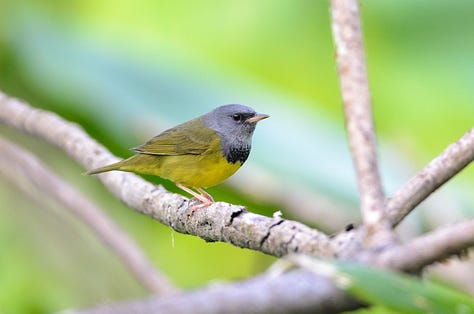
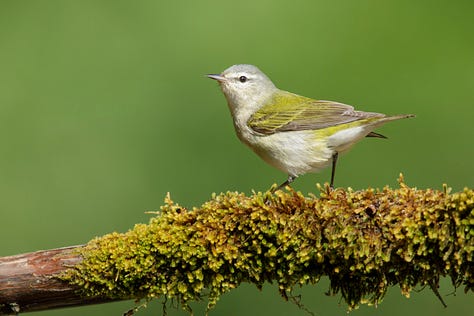
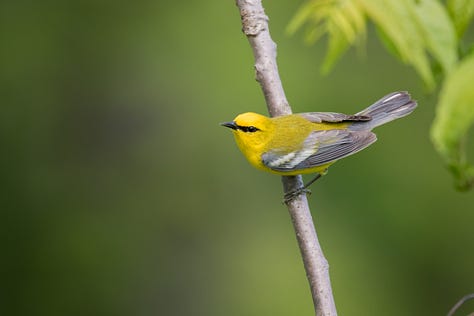
HEY! 114 unique bird species recorded in McGolrick Park seems like a lot. Surely higher numbers of bird species were recorded in some months than others, migrations considered, right?
Thanks for your question, imagined reader! Here’s a look at how many unique bird species were recorded in McGolrick Park, by month:
Things to notice:
Peaks in April and May are spring migrants passing through NYC while flying north, from as far away as South America (!), en route to summertime breeding grounds
Peaks in Aug - Oct are those same migrants passing back through NYC, this time southbound, on their way to wintering grounds … again—as far away as South America (!)
Because McGolrick Park is a humble, 9-acre, very urban park, you can correctly assume that species counts are higher in wilder + bigger parks and refuges, like Prospect and Jamaica Bay, across all months
Winter counts, specifically, don’t drop so dramatically for places with estuaries, lakes, et al, ‘cause that’s when ducks arrive en masse to US waterways [more]
COOL! BUT HEY! I’m a real sicko who wants to see a breakdown of which bird species were noticeable in McGolrick when!
We gotchoo! Check the below table (raw data here, for you super freaks). 1 means the species was recorded in McGolrick Park in a given month. 0 means not.
Things to notice:
Some zeros may simply be due to noticers and birds just getting unlucky and missing each other—a real possibility with the crowdsourced, eBird data by which this chart was generated. Example: Row 12: Northern Cardinal. That species is certainly findable in NYC (and McGolrick Park) year-round
See how the table’s lower 2/3, starting around Row 42: Scarlet Tanager, seems to look like two green, vertical columns, running through red? Most such birds are the migrants who solely pass through New York City in spring and fall
See how a small number of species, like Row 25: Laughing Gull, go all green towards the middle of the table, between red ends? These species migrate to New York City, then summer here. Summer, to birds, is breeding season. Laughing Gulls, Chimney Swifts, Great Crested Flycatchers—these birds come to our fair city to make babies
For an even more granular, weekly look at the same data, try this chart (Give it a second to load)
EPILOGUE
Whether delight or hate-reading brought you this far down the page, HELLO and THANK YOU for your attention! If you haven’t yet done so, please like and share this newsletter, or subscribe to the ~$5/ month paid tier. For a measly few bucks every lunar cycle—like, the cost of a coffee—you get perks such as access to members-only events, a free piece o’ signature merchandise, etcetera! Plus you help to keep McGolrick Bird Club and this digital digest running.
Truly yours.




